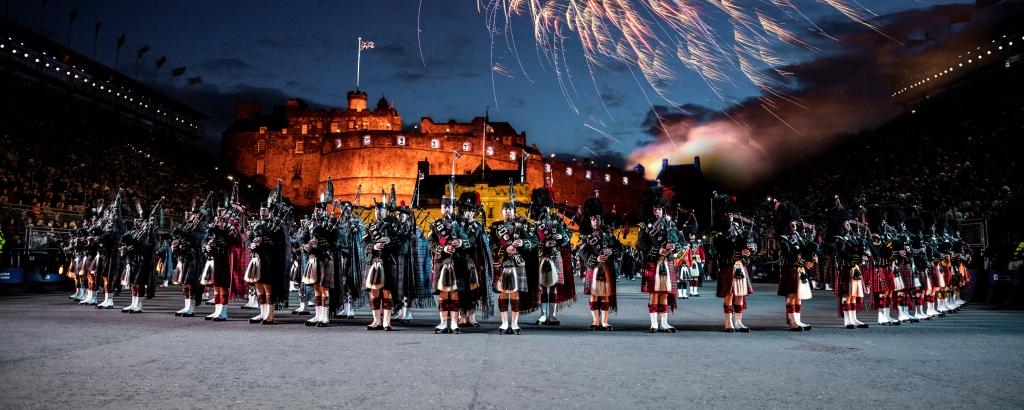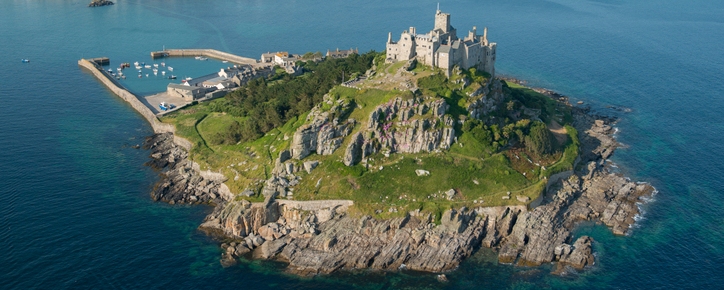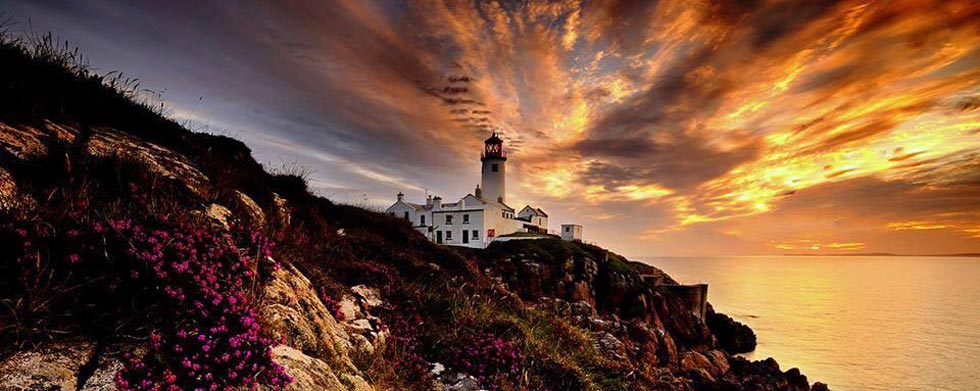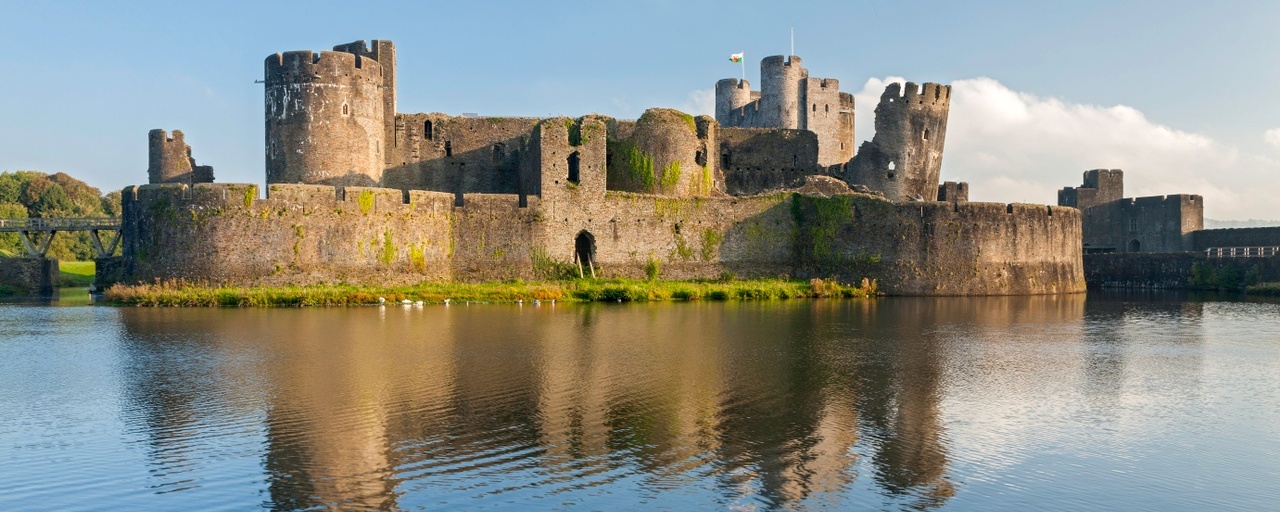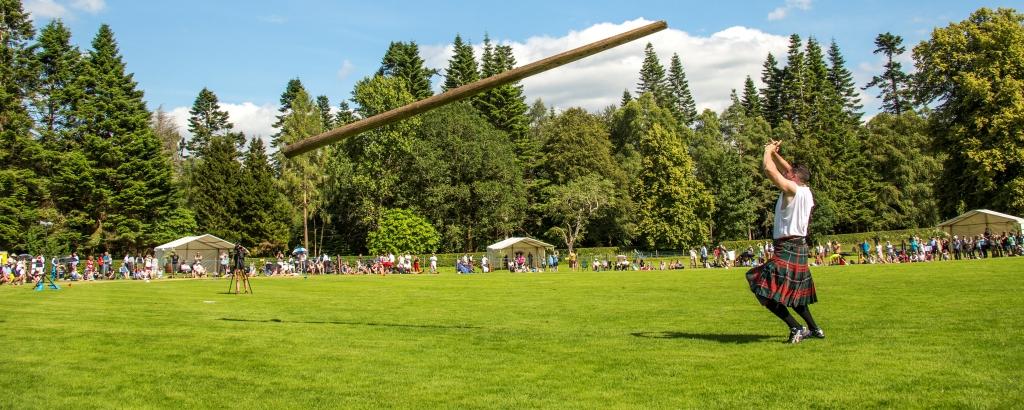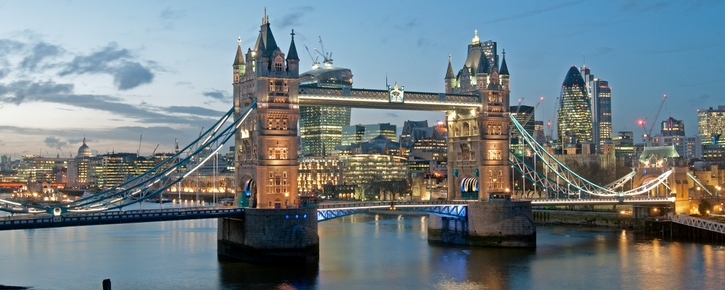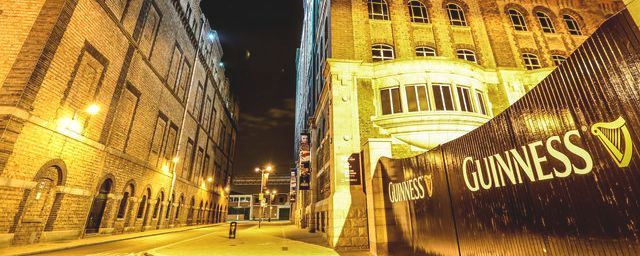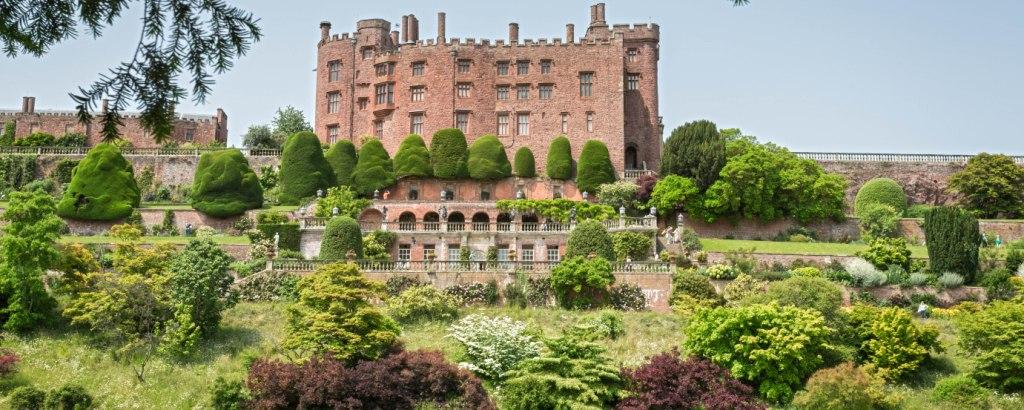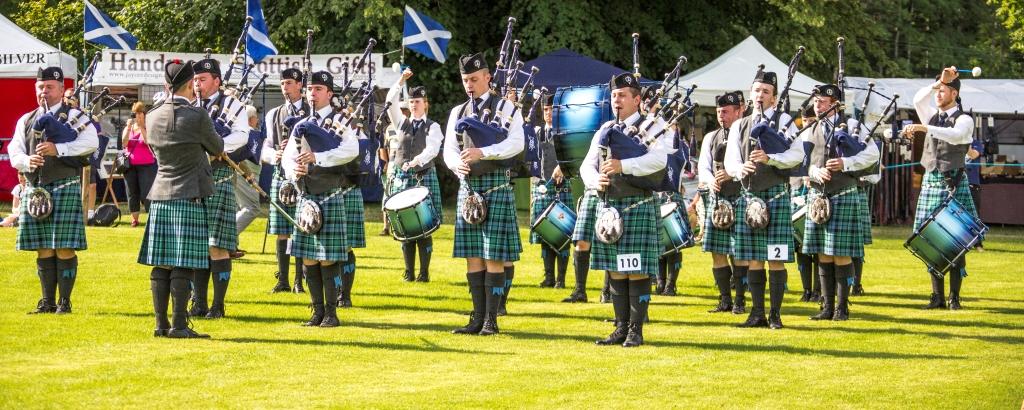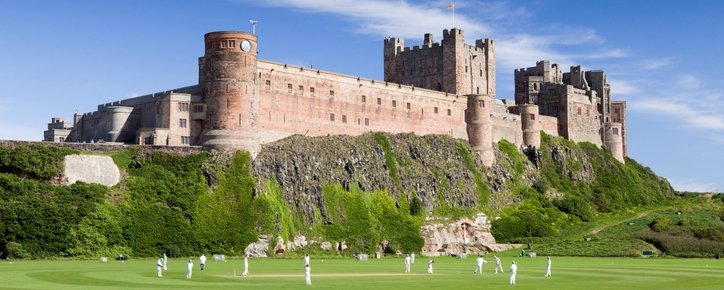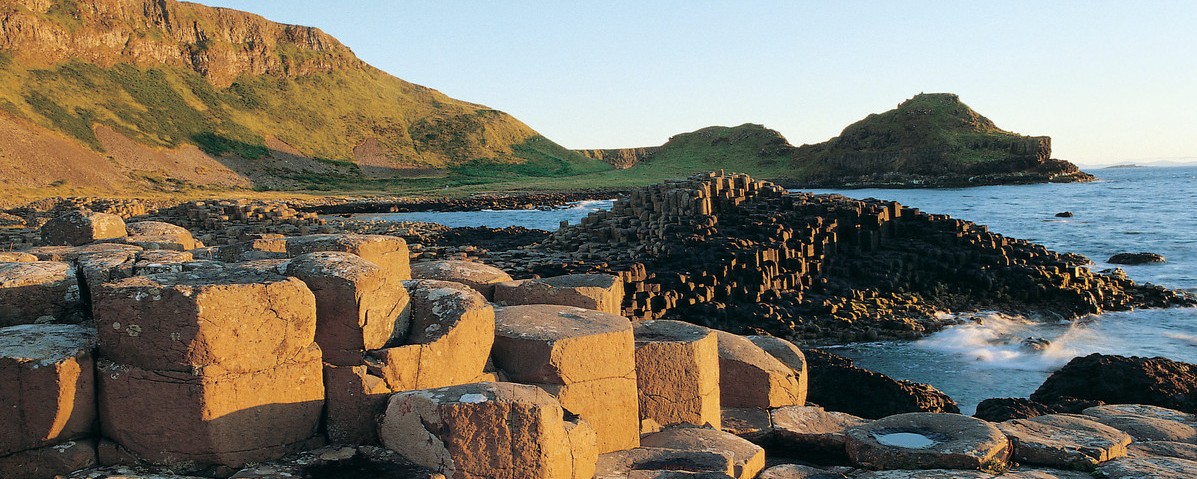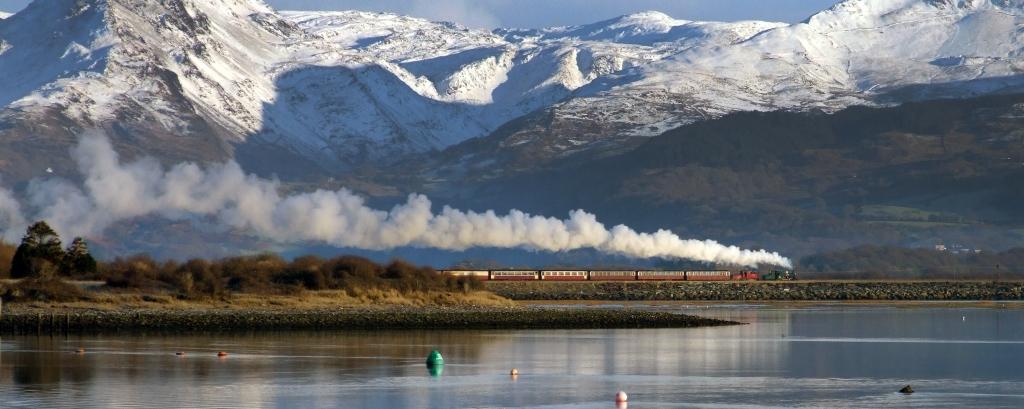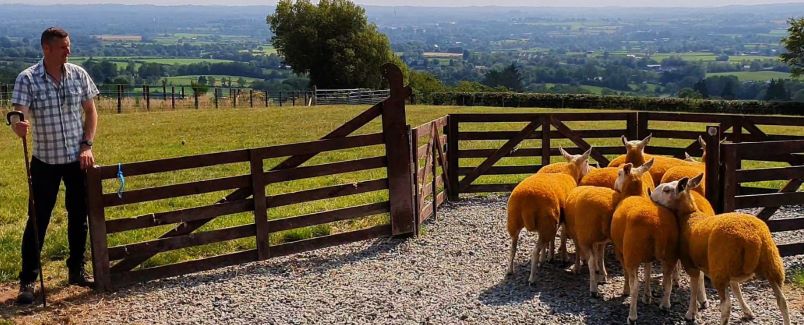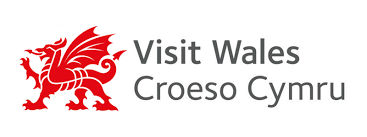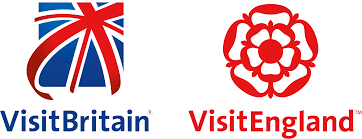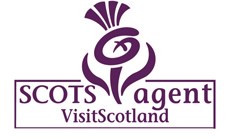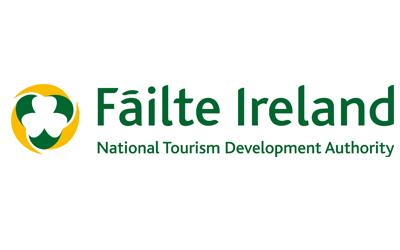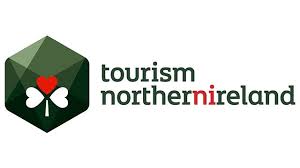Uncover the secrets of Ireland's six National Parks
Ireland is famous for its natural beauty, the lush green landscape giving rise to the country’s nickname ‘The Emerald Isle’. From the rolling hills and wooded valleys of the Wicklow Mountains in the east, to the austere beauty of The Burren in the south west, Ireland’s six National Parks offer visitors the chance to explore the Irish countryside at its best. Here are our top tips for your clients to get off the beaten track, to enjoy the delights of nature and to discover millennia of Irish history and heritage.
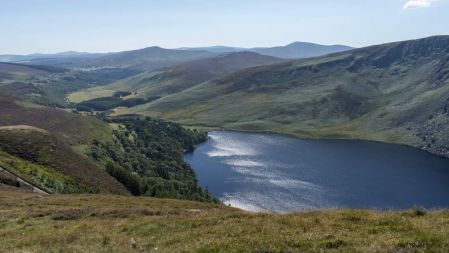 Wicklow Mountains National Park © Fáilte Ireland
Wicklow Mountains National Park © Fáilte Ireland
Wicklow Mountains, County Wicklow
Wicklow Mountains National Park is situated just south of Dublin and is the largest of Ireland’s National Parks. Covering over 20,000 hectares, the park is one of Ireland’s newest, officially opening in 1991.
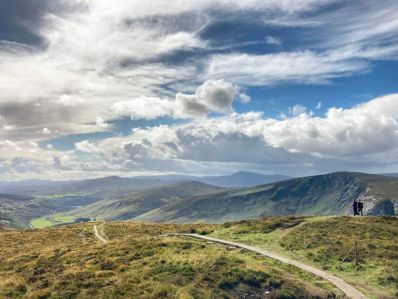 Wicklow Mountains National Park, courtesy Chris Spierin
Wicklow Mountains National Park, courtesy Chris Spierin
The National Park extends over much of the Wicklow Mountains. Blanket bog and heath cover the upland slopes and rounded peaks. The wide, open vistas are interrupted only by forestry plantations and narrow winding mountain roads. Fast-flowing streams descend into the deep lakes of the wooded valleys and continue their course into the surrounding lowlands.
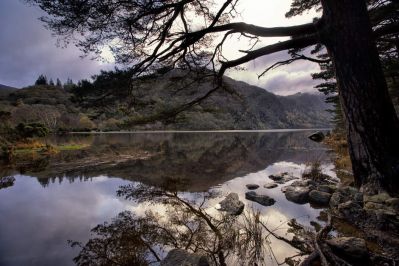 Glendalough © Tourism Ireland
Glendalough © Tourism Ireland
It’s location close to Dublin is perhaps one of the reasons why this is the most popular National Park in Ireland, with over one million visits each year. The most visited area of the park is the scenic Glendalough Valley where the ancient monastic settlement of St. Kevin's is located.
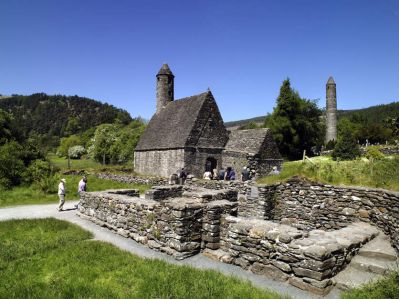 St Kevin's, Glendalough © Tourism Ireland
St Kevin's, Glendalough © Tourism Ireland
A drive along the Old Military Road is a wonderful way for visitors to see the park. The road dates back to the 1798 rebellion, when the inaccessibility of the Wicklow Mountains proved a problem for the government forces. The newly constructed road enabled troops to travel quickly to wherever they were needed.
Killarney National Park, County Kerry
Ireland’s first National Park, Killarney dates back to 1932 and is in south west Ireland, close to the magical Ring of Kerry tourist route. It was designated a UNESCO Biosphere Reserve in 1981.
Killarney National Park is home to the famous Lakes of Killarney, as well as Ireland’s last remaining herd of native red deer. The distinctive combination of mountains, lakes, woods and waterfalls gives the 10,000 hectare park a special beauty.
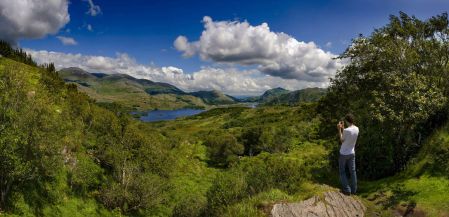 The Lakes of Killarney from Ladies View, courtesy Chris Hill
The Lakes of Killarney from Ladies View, courtesy Chris Hill
The focal point of the National Park for visitors is Muckross House and Gardens. The 19th century mansion is elegantly furnished and the enchanting gardens run down to the shores of Muckross Lake.
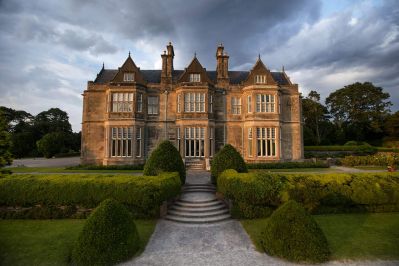 Muckross House and Gardens, courtesy Trustees of Muckross House
Muckross House and Gardens, courtesy Trustees of Muckross House
Horse-drawn jaunting cars are a traditional feature of the National Park, offering visitors a unique way of exploring, and a boat trip is a great way to experience the park’s lakes. The hiking in Killarney National Park is among the most beautiful in the world, but there are also many trails for easier walking tours.
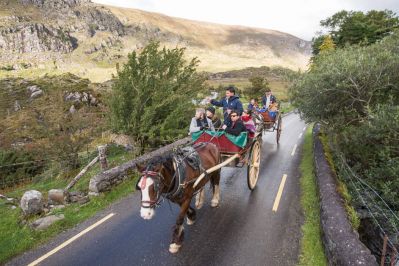 Jaunting car tour, courtesy Hu O’Reilly
Jaunting car tour, courtesy Hu O’Reilly
Romantic Ross Castle, on the shores of Lough Leane, dates back to the 15th century and is well worth visiting. Perfect for a photo op!
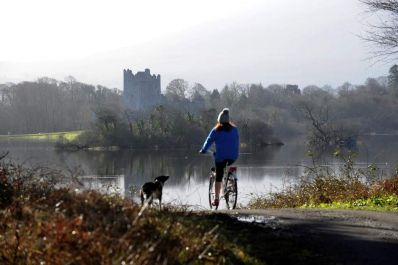 Ross Castle, Killarney, courtesy Don MacMonagle
Ross Castle, Killarney, courtesy Don MacMonagle
The Burren, County Clare
35 miles north of the city of Limerick, close to the dramatic Cliffs of Moher on the Atlantic coast, is The Burren National Park, part of the wider Burren and Cliffs of Moher UNESCO Geopark.
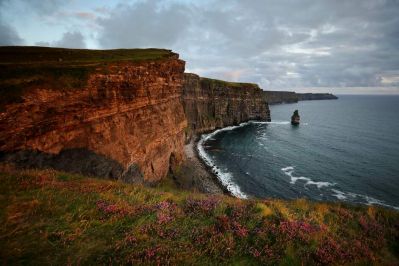 The majestic Cliffs of Moher, Co Clare, courtesy Chaosheng Zhang
The majestic Cliffs of Moher, Co Clare, courtesy Chaosheng Zhang
The park is located in the south eastern corner of the Burren and is approximately 1,500 hectares in size. Burren comes from the Irish word Boíreann meaning a rocky place and the region is indeed famous for its incredible limestone pavement landscape, which can feel like being on the moon!
However, the park is actually an exceptional habitat for many flower species and a visit to the Burren during the summer can leave visitors amazed by the colourful diversity of flowering plants.
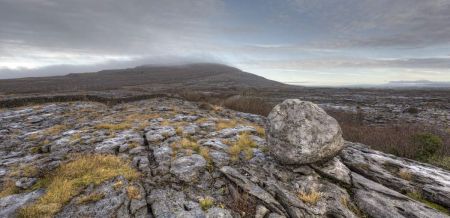 Mullaghmore, The Burren National Park, Co Clare, courtesy Carsten Krieger
Mullaghmore, The Burren National Park, Co Clare, courtesy Carsten Krieger
Mullaghmore mountain, at the centre of the National Park, is popular with climbers and walkers, and Poulnabrone Dolmen, on the high Burren limestone plateau, is the oldest megalithic monument in Ireland.
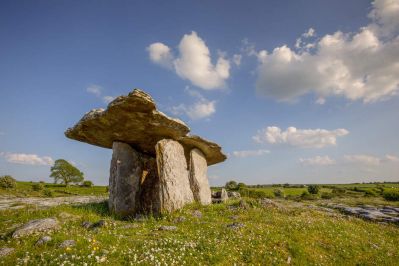 Poulnabrone Dolmen, The Burren National Park © Tim Thompson
Poulnabrone Dolmen, The Burren National Park © Tim Thompson
The Mullaghmore Loop is a dramatic five mile route which loops around the summit of Mullaghmore mountain, passing along the shore of Lough Gealáin, through large expanses of open limestone pavement, some grassland and hazel woodland.
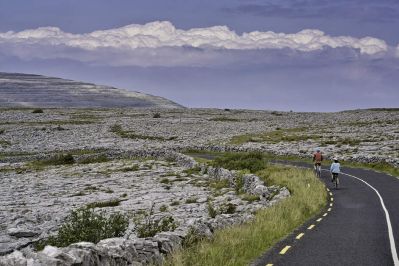 Mullaghmore Loop, The Burren, courtesy Brian Morrison
Mullaghmore Loop, The Burren, courtesy Brian Morrison
Connemara National Park, County Galway
Situated in the west of Ireland, in County Galway, Connemara National Park covers 2,000 hectares of mountain landscape, expanses of bogs, heaths, grasslands and woodlands. Some of the park’s mountains form part of the famous Twelve Bens or Beanna Beola range.
Connemara National Park was opened to the public in 1980 and Diamond Peak, a cone-shaped peak of graphitic rock, is its crown jewel, offering commanding views of the Twelve Bens to the south east.
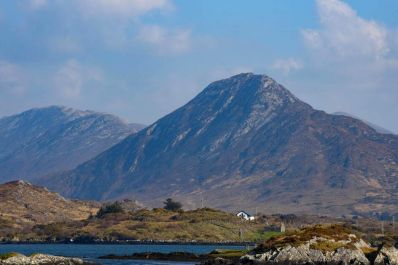 Diamond Hill, Connemara National Park, courtesy Don MacMonagle
Diamond Hill, Connemara National Park, courtesy Don MacMonagle
Much of the present parkland once formed part of the Kylemore Abbey Estate, and the abbey can be visited to this day. Kylemore Abbey is a romantic Gothic castle with an elaborate Victorian garden that has been home to Benedictine nuns since 1920. Dating back to the late 1800s, the abbey was built by a wealthy businessman for his wife, and is one of Ireland’s top visitor attractions.
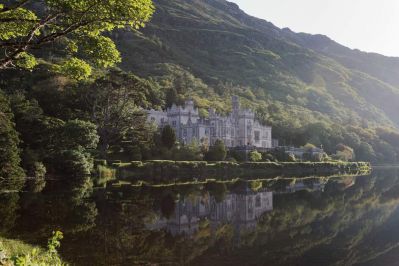 Kylemore Abbey, Connemara, courtesy Chaosheng Zhang
Kylemore Abbey, Connemara, courtesy Chaosheng Zhang
The largest mammal in the park is the Connemara Pony. Although a domestic animal, this pony is very much part of the Connemara countryside.
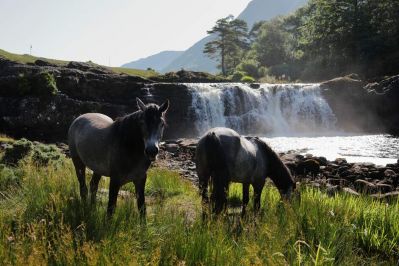 The world-famous Connemara ponies, courtesy Chaosheng Zhang
The world-famous Connemara ponies, courtesy Chaosheng Zhang
Clifden, Connemara’s unofficial capital, is the launchpad for one of Ireland’s greatest drives. The Sky Road is an incredible 12 mile route on the edge of the Atlantic, with views of County Clare to the south and Mayo to the north.
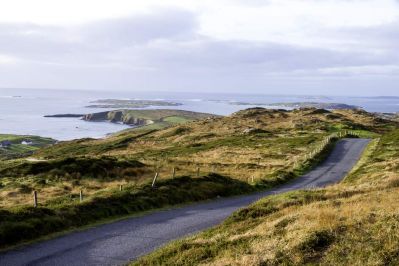 Sky Road, Co Galway, courtesy Christian McLeod
Sky Road, Co Galway, courtesy Christian McLeod
Wild Nephin National Park, County Mayo
Wild Nephin is Ireland’s newest National Park and is located in County Mayo, in the west of Ireland, just a stone’s throw away from the unmissable Wild Atlantic Way. It comprises 15,000 hectares of Atlantic blanket bog and mountainous terrain, covering a vast uninhabited and unspoilt wilderness dominated by the Nephin Beg mountain range.
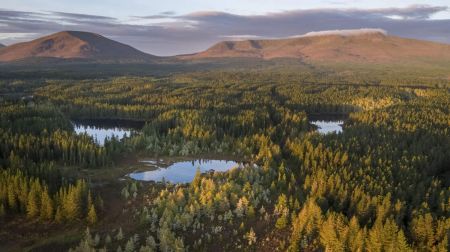 Wild Nephin National Park, courtesy Gareth McCormack
Wild Nephin National Park, courtesy Gareth McCormack
To the east of the mountains is the Nephin Forest, which is mainly comprised of Sitka spruce and lodgepole pine, and was originally planted for commercial purposes. To the west is the Owenduff Bog, one of the last intact active blanket bog systems in Ireland and Western Europe and an important scientific and scenic feature of the National Park. The park also protects a variety of other important habitats and species, including alpine heath, grasslands and lakes and rivers.
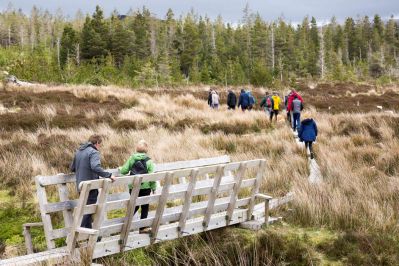 Wild Nephin National Park, courtesy Darren Moran
Wild Nephin National Park, courtesy Darren Moran
Mayo is home to Ireland’s first International Dark Sky Park, showcasing some of the darkest, clearest skies in the world. Nestled between the Nephin Beg mountains and the unspoiled Atlantic coastline, the Dark Sky Park extends across an area of 60 square miles, encompassing Wild Nephin National Park.
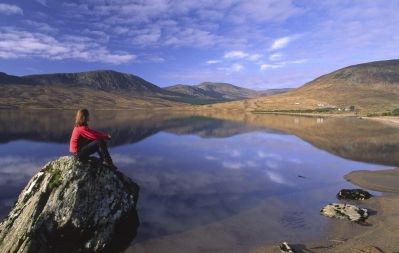 Lough Feeagh, Nephin Beg Mountains, courtesy Gareth McCormack
Lough Feeagh, Nephin Beg Mountains, courtesy Gareth McCormack
To visit Wild Nephin National Park really is to get back to nature, as it includes Ireland’s most remote mainland location. When you visit, it’s time to put away the mobile phones and laptop computers and to go off grid!
Glenveagh National Park, County Donegal
Described by TripAdvisor as “literally heaven on earth, peaceful, beautiful, charming and historical”, Glenveagh National Park is a remote wilderness of rugged mountains, pristine lakes, tumbling waterfalls and enchanted native oak woodland, in the heart of the Derryveagh Mountains in County Donegal, in the far north west of Ireland.
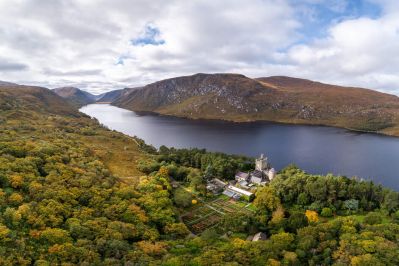 Glenveagh National Park, courtesy Gareth Wray Photography
Glenveagh National Park, courtesy Gareth Wray Photography
At the centre of the park on the edge of Lough Veagh is Glenveagh Castle, a late 19th century castellated mansion, built as a hunting lodge. Its construction in a remote mountain setting was inspired by the Victorian idyll of a romantic highland retreat and the Castle Gardens are regarded as one of Ireland’s outstanding horticultural masterpieces.
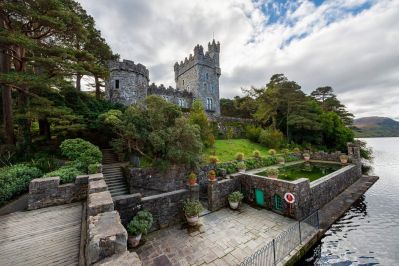 Glenveagh Castle, courtesy Gareth Wray Photography
Glenveagh Castle, courtesy Gareth Wray Photography
The 16,000 hectares of Glenveagh includes most of the Derryveagh Mountains, the Poisoned Glen and part of Errigal Mountain and is a beautiful place to walk the hills and follow the trails, to cycle beside Lough Veagh, to enjoy fishing or perhaps to experience wild camping.
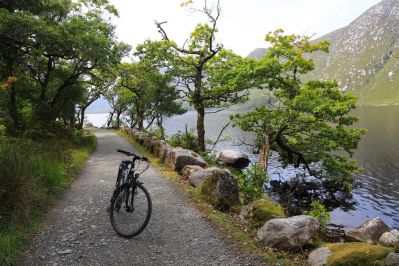 Lakeside path, Glenveagh National Park, courtesy Yvonne Gordon
Lakeside path, Glenveagh National Park, courtesy Yvonne Gordon
The park is home to the largest herd of red deer in Ireland – although these are not native, as they were introduced from Scotland in the 19th century – and golden eagles were reintroduced into the park in 2000.
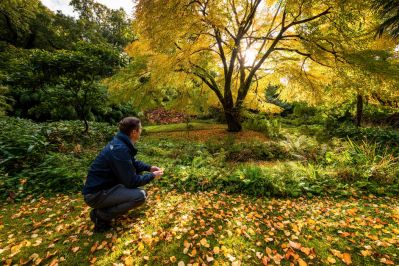 Glenveagh National Park, courtesy Gareth Wray Photography
Glenveagh National Park, courtesy Gareth Wray Photography
If your clients would like to enjoy a tailor-made tour of Ireland, including visits to one or more of the country’s extraordinary National Parks, please do contact our friendly team today. As well as arranging visits to the parks, we can organise accommodation in the best locations and delicious meals featuring fresh local produce. For those looking for self-drive, we can arrange car rental, or perhaps your clients would prefer their own driver for the tour – either way, we can help!
Or why not follow in the footsteps of John Muir, the Father of the National Parks, on a tailor-made tour of Scotland?
